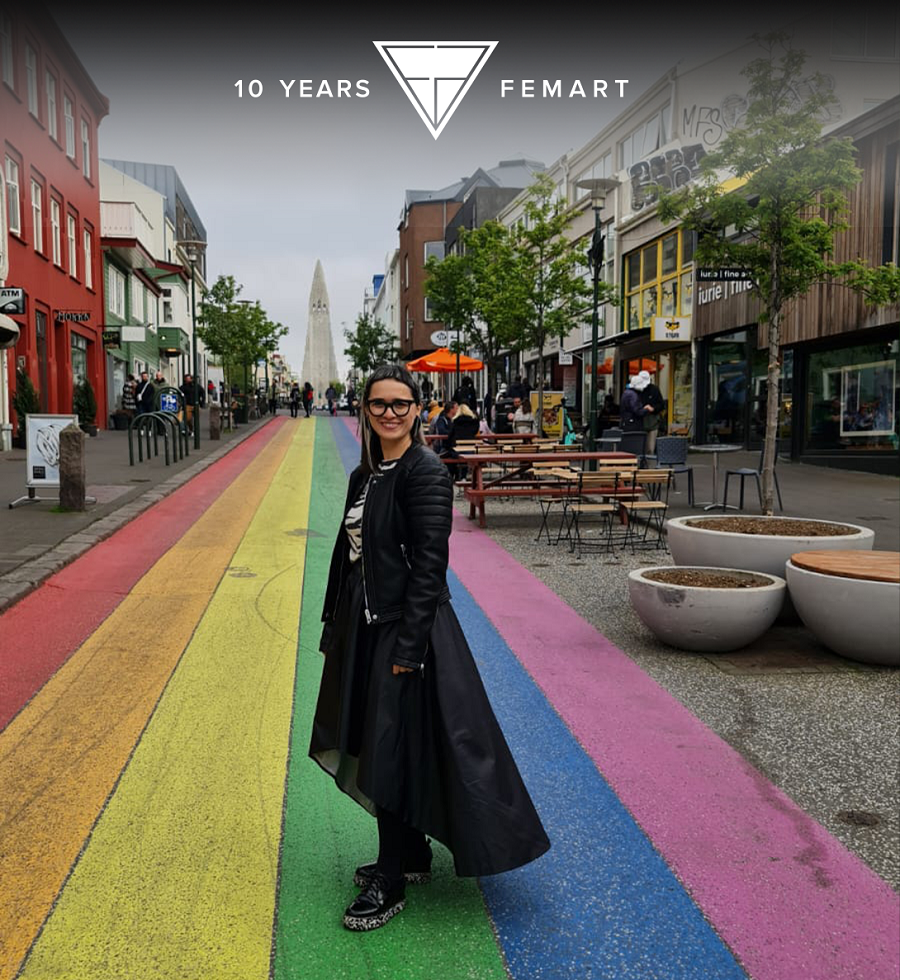By Ivana Bilić
Audience enters Oda Theatre and the actors are already there, welcoming them. The play starts right away. What is behind what looks like drag? What lies in the depths of Albanian patriarchy? The story of burrnesha – women who had taken the oath to live like men forever and swore to never engage in sexual intercourse – sworn virgins. There might be several reasons for that – if households did not have any male heirs, or due to a blood feud, or in order to inherit property, etc. Therefore, biological women would live as men and enjoy freedom men have.
AT LAST, THE ANIMAL HAS ARRIVED AT THE CIRCUS
The story starts in London with a professor of anthropology who studies the phenomenon of sworn virgins in Albania. Julian, the drag queen, hears about the story from his professor and becomes fascinated with it. Here the author introduces another dimension – modern, queer, a man in drag, as a sort of contrast to this old, traditional. The story moves from London to Albania, where the professor wants to meet with one burrnesha, just to move back again to London, where she will become a part of a queer performance. Then the clash between two worlds happens. Burrnesha feels as if she was in a cage and studied as a wild animal.
HOW DOES THE CIRCUS ANIMAL ENTERTAINING TOURISTS BENEFIT?
The author presents a stereotypical clash of ‘modern’, Western and ‘primitive’, Eastern. The performance also wanted to cast light on the Western treatment of the phenomenon of sworn virgins. For quite some time the West was interested in researching this phenomenon, while depriving women from their agency, exploiting them, exotifying with sometimes this intention to mock Balkans’ ‘primitive’ customs.
ENEMY THAT IS SO MUCH STRONGER THAN YOU – YOUR FEMININE NATURE EMBEDDED DEEP WITHIN
A lot of symbolism was there throughout the play, especially connected to the female body. Sose, the sworn virgin says how it is challenging to live as a man trapped in a female body. There is a scene where she pulls some red ropes that represent her period. It is so difficult to be strong during these five days when her body is physically weak. The comparison, or rather contrast between burrnesha and drag is very skillfully portrayed. The author decided to draw a parallel between women who become men but do not really articulate their transformation in gender theory, and between men dressing as women in their drag performances. The former ‘liberation’ from patriarchal society which is actually in reality more oppression than liberation, is contrasted to drag queens who are indeed liberated in their performances. Sworn virgins do not realize that it is not a choice, it is a conditioned choice, especially for those living in very patriarchal families and circumstances.
DID YOU KISS ME AS A MAN OR AS A WOMAN?
Women who decide to live as men and adapt to men-like behaviors are often in highlands, rural areas, isolated from something different, even from the world in a broader sense. They do not get curious, never question themselves to find out who they are, who they can be. Sose went to London and discovered the world. She was asked many questions and it seemed that by answering them she was learning about herself. She engaged in an intimate relationship with Edith, and she didn’t even know she had it in her. She discovers that she is attracted by women.
She never kissed before. When asked about it, she said that was behind her. There are many questions she has been simply suppressing.
THIS IS WHAT MY LIFE LOOKS LIKE
Tringa Hasani, who played burrnesha, said that it was very difficult to play this part in the beginning. The help and instructions she got from the director were very valuable. She was, of course, familiar with the topic, but still knew very little about it. This experience was rather eye-opening. She declared that she even met one burrnesha who lives in New York and who told her: “This is what my life looks like.”
Ivana Bilić (Sarajevo, BiH) is an intern in Artpolis where she will conduct her research on the role of performing arts for social change. She is a translator and interpreter in English, French and Bosnian and a human rights student with special interest in women’s rights, minorities and LGBT+.

